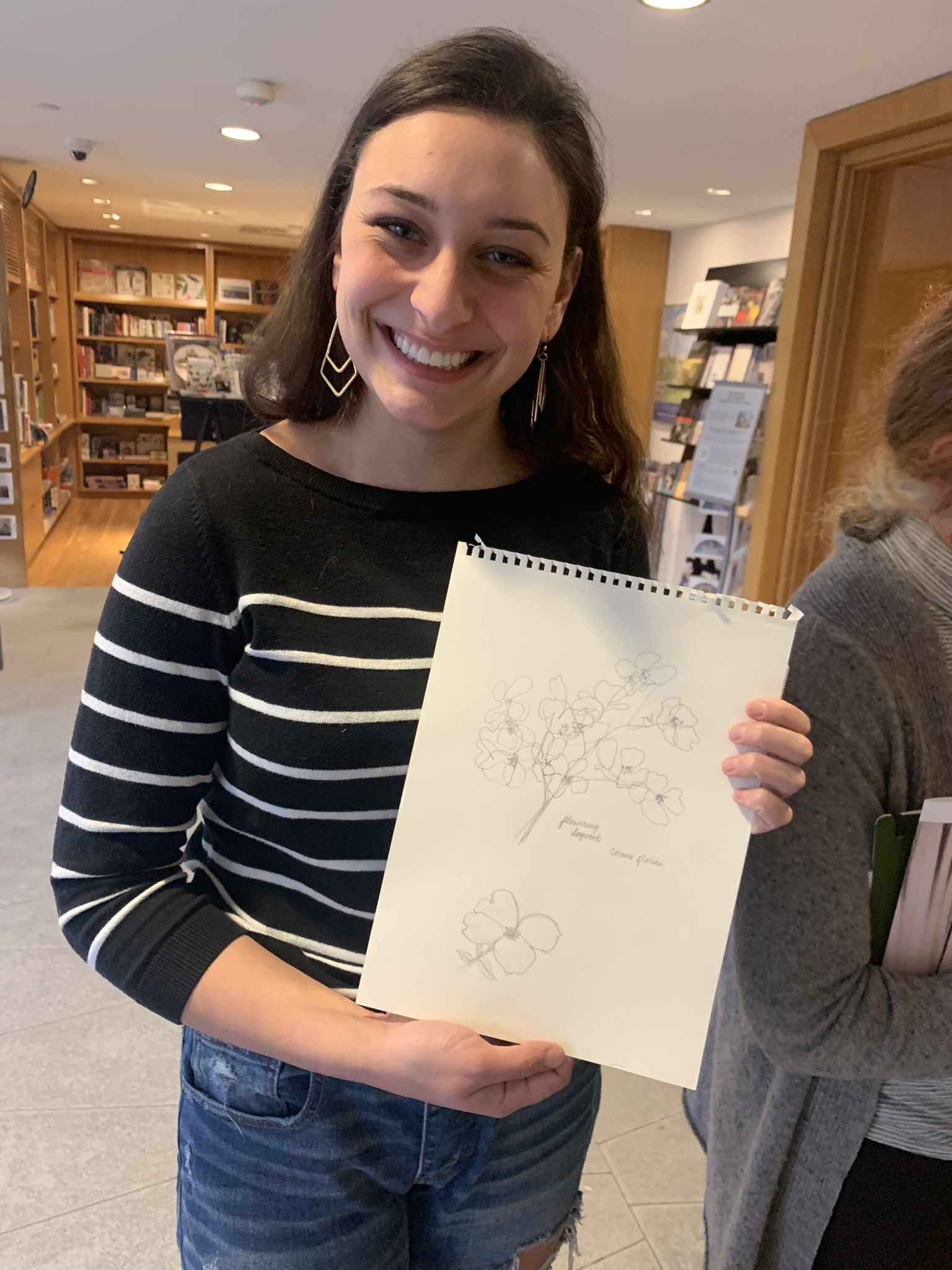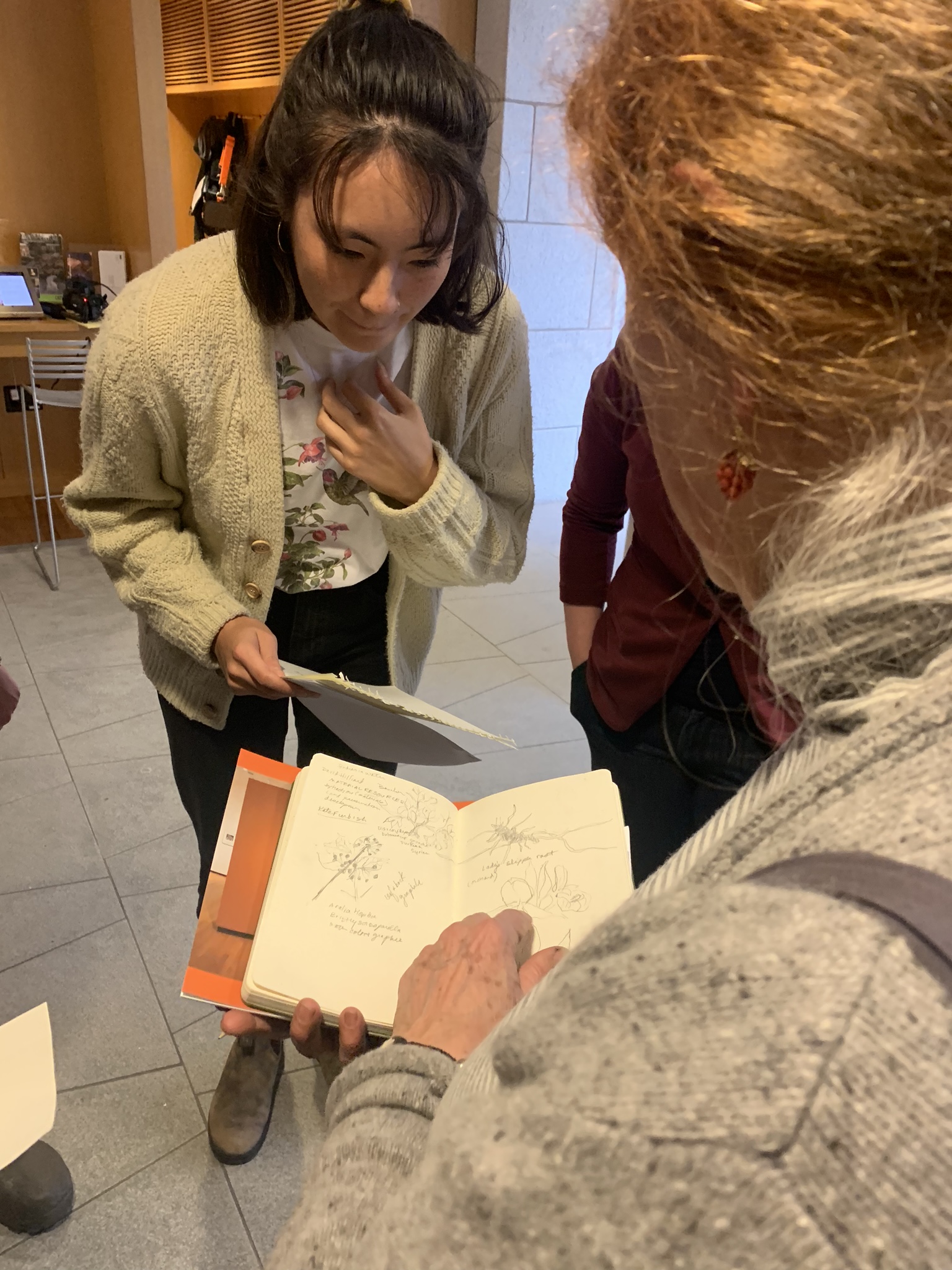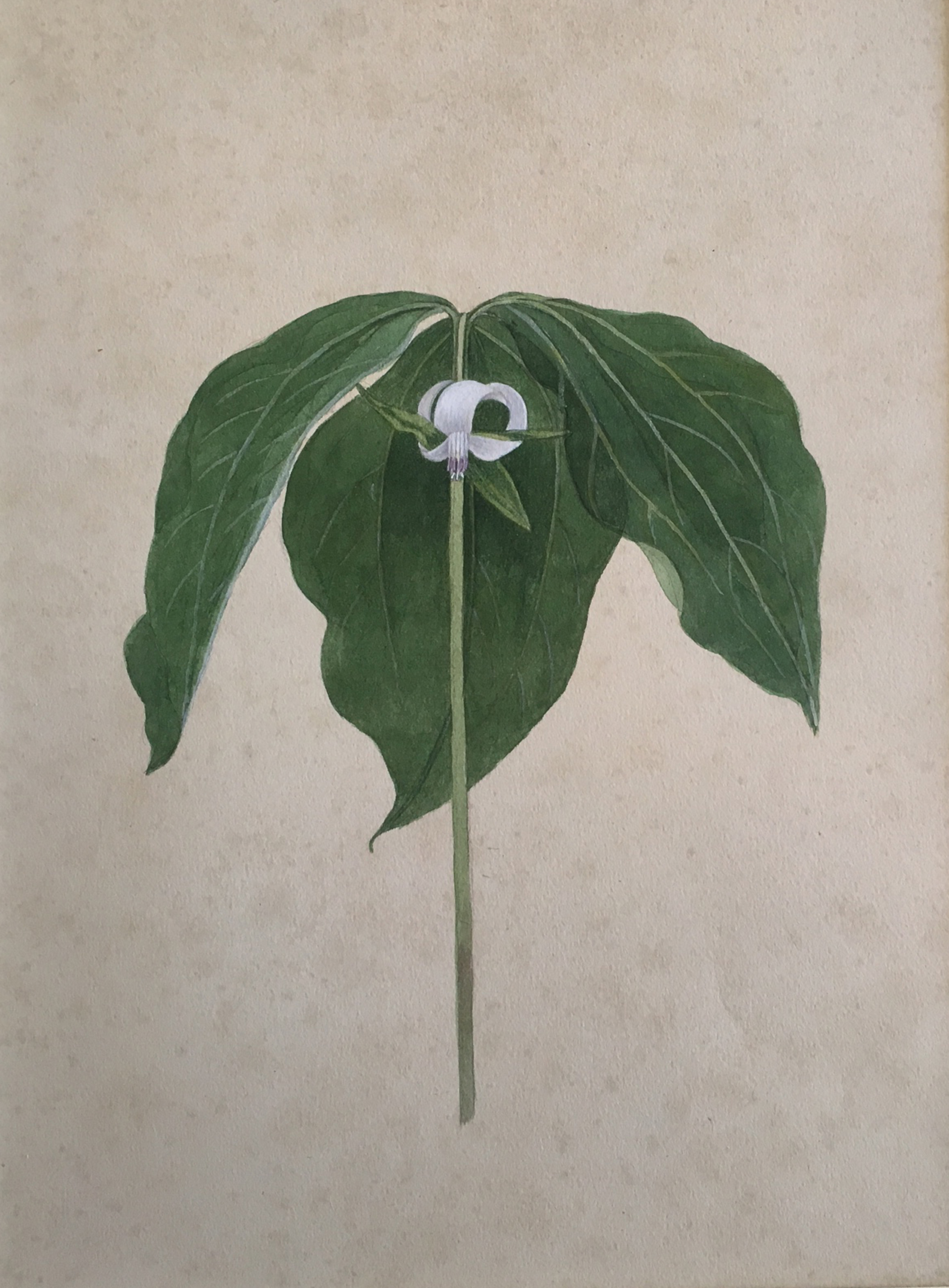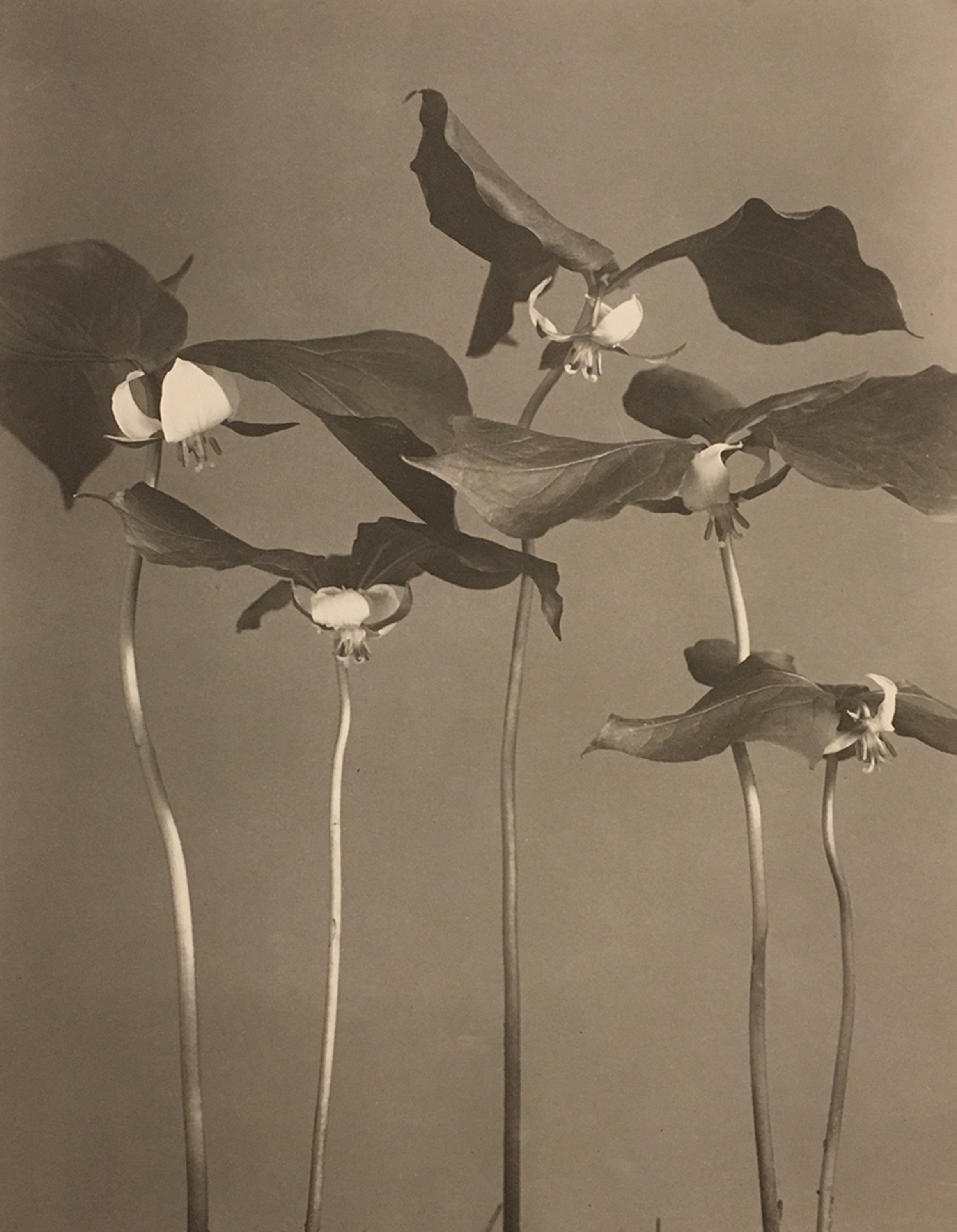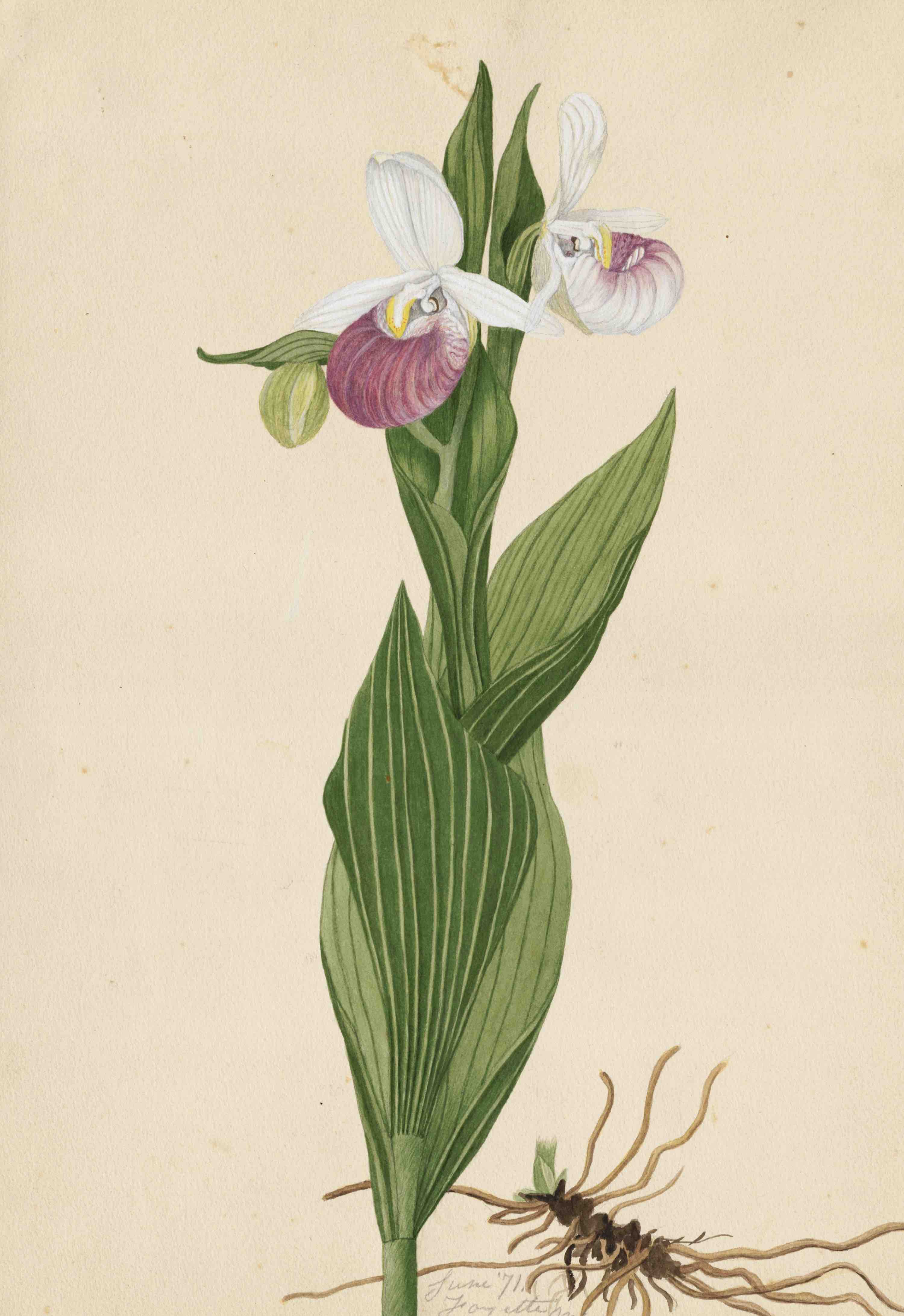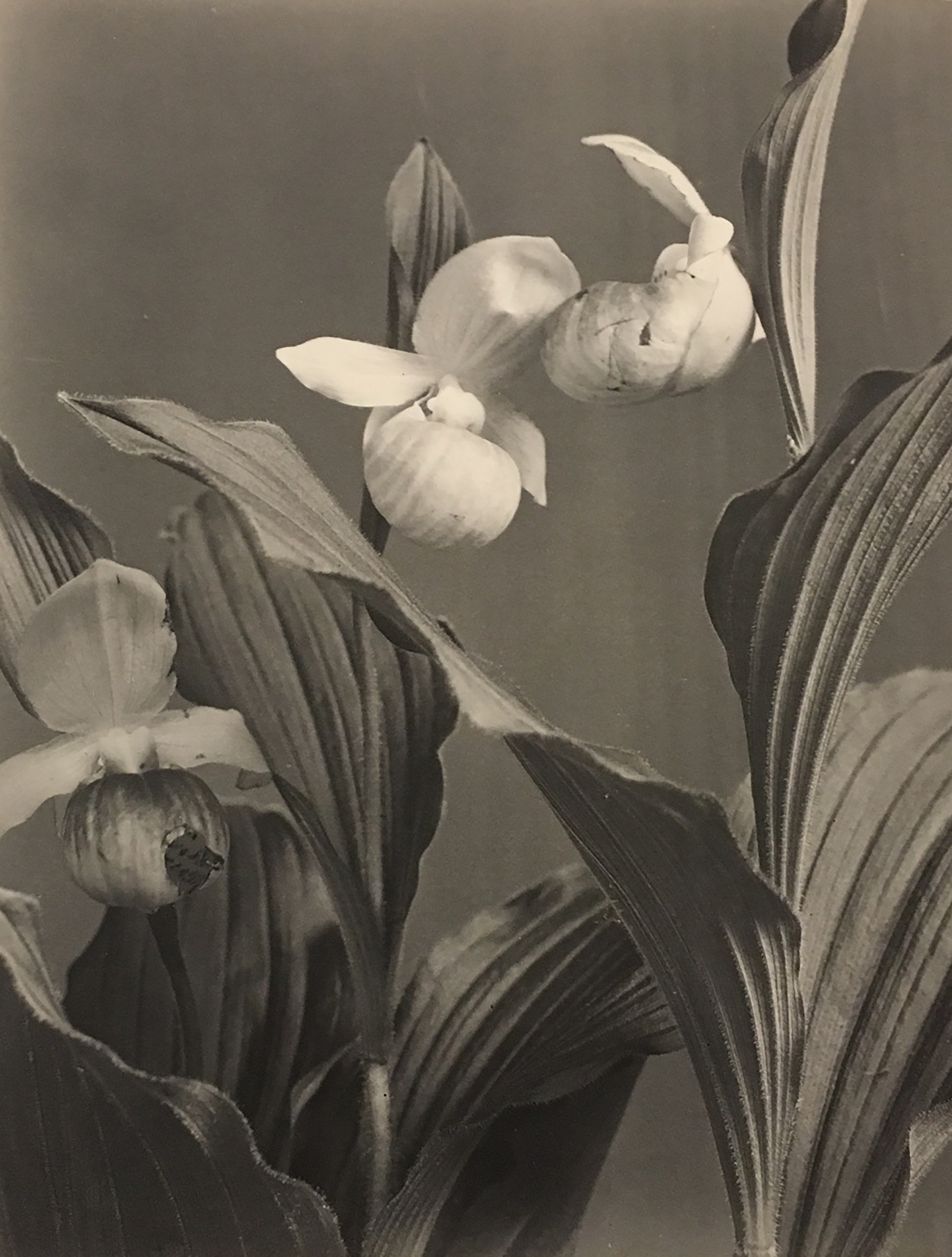The Interplay of Science and Art: Field Note Friday in the Museum
By Rebecca GoldfineField Note Friday held its latest session in the Museum of Art to take advantage of two nature-focused exhibitions: Kate Furbish and Edwin Hale Lincoln: New England Botanical Studies, and Material Resources: Intersections of Art and the Environment.
Every third Friday a group of Bowdoin students, staff, and faculty interested in ecology gather to study nature firsthand. Though most of these Field Note Friday workshops take place outside, its two organizers—biology lab instructors Shana Stewart Deeds and Elizabeth Halliday Walker—opted to hold the most recent session inside the Museum to highlight the connections between art, ecology, and the environment.
"Shana and I always talk about how we want to incorporate drawing into our science classes, because there is a lot of research showing how the act of drawing helps you remember something," Walker said. Since moving to New England, she said sketching local species has helped her grow more adept at recognizing them.
Because drawing from real life demands such close observation, it can help students discern details and notice small changes over time they might have missed otherwise, according to Deeds. "We try to teach our students to be good observers, because if you can become a better observer, you will be a better scientist," she said.
The Bowdoin Museum of Art lends clipboards, pencils, and even foldable stools to visitors who don't bring supplies with them.
Besides several students and people from the community, Bowdoin Professor of Earth and Oceanographic Science Collin Roesler participated in the workshop. She said that when she sketches in the field, she finds herself becoming more sensitive to the shape, size, and color of landscape features.
"Those details and the relationships between them are really important for discerning process in the sciences. So I am a better scientific observer when I take the time to make sketches," she said, adding that "art is transformative in so many different capacities."
Several staff from around campus were also invited to give brief talks at the latest Field Note Friday. Museum Curatorial Assistant Honor Wilkinson spoke about the Material Encounters exhibition, while the library's director of Special Collections and Archives, Kat Stefko, spoke about Furbish's botanical studies and Lincoln's photographs.
Additionally, artist Judith Allen, who lives in Maine and Greece, joined the event. She described her practice of drawing wild flowers on her hikes, saying she sees this practice as an act of protest, especially as plant species begin to disappear. Any time an artist "does anything about the natural world," their work automatically "becomes activist art," she said.
Allen's work is part of a new show of "activist art" in Portland's Greenhut Galleries, February 7 - March 2, called Man-made: A State of Nature.
Thanks to ecologists Katie Galletta ’21 and Ayana Harscoet ’21 for their contribution to the video.
